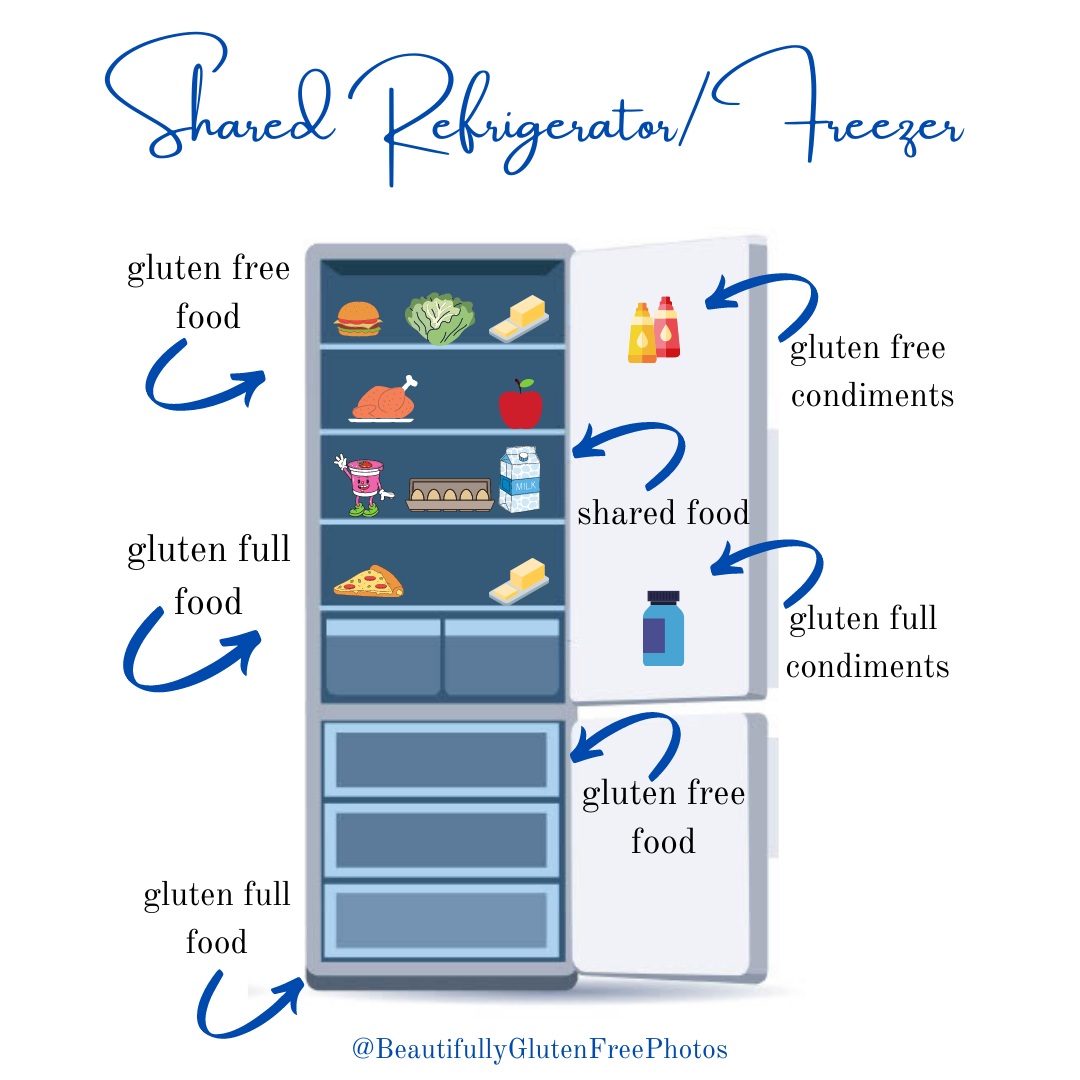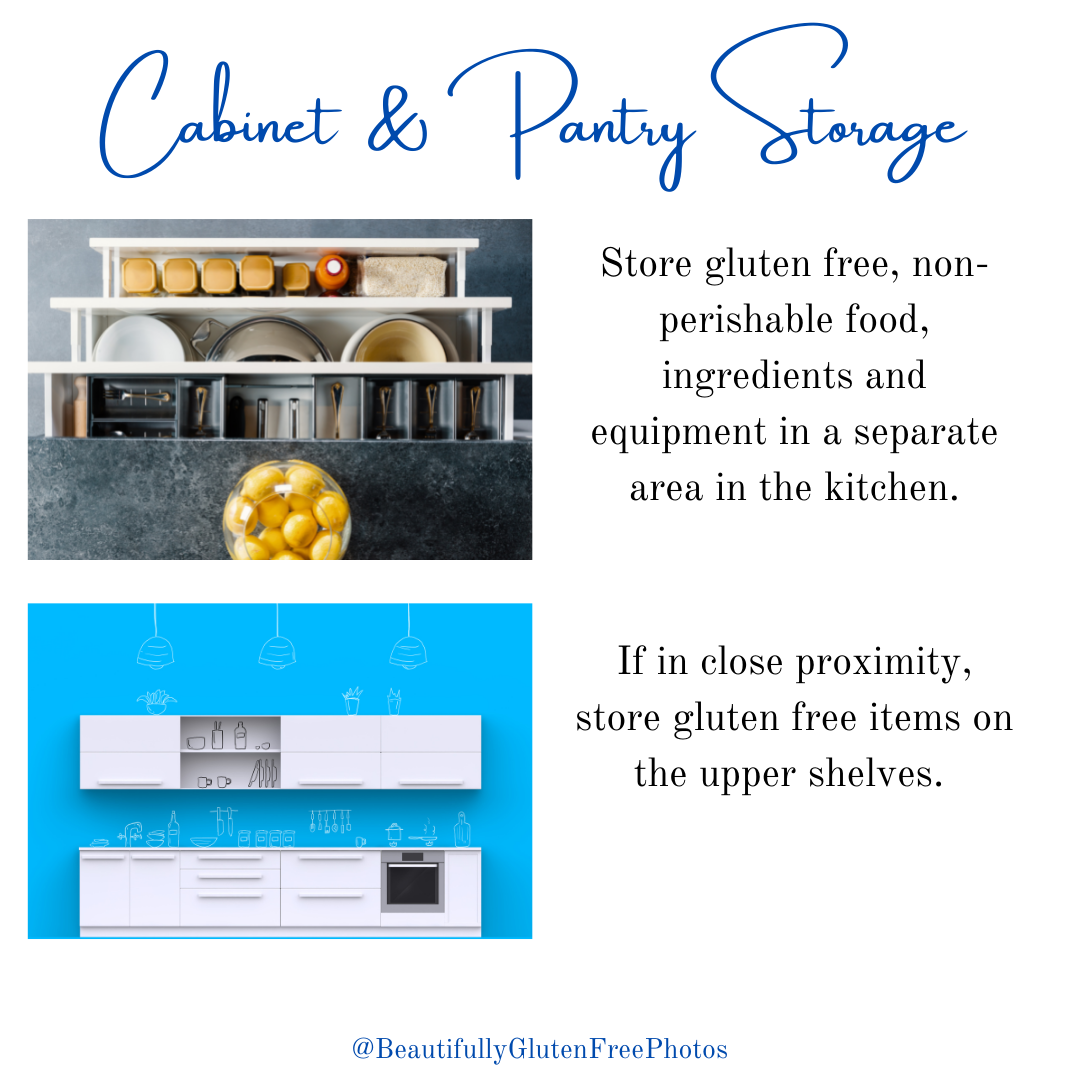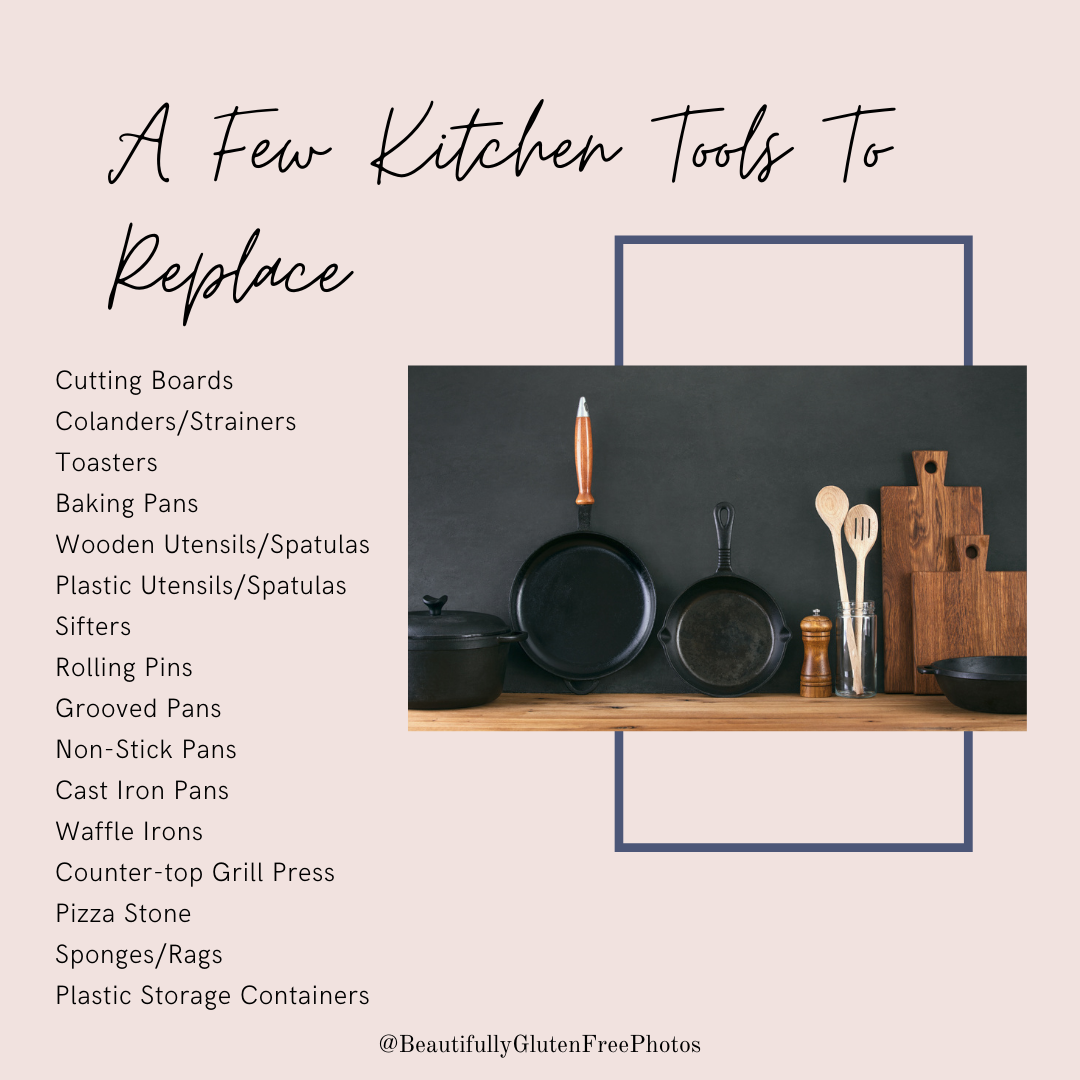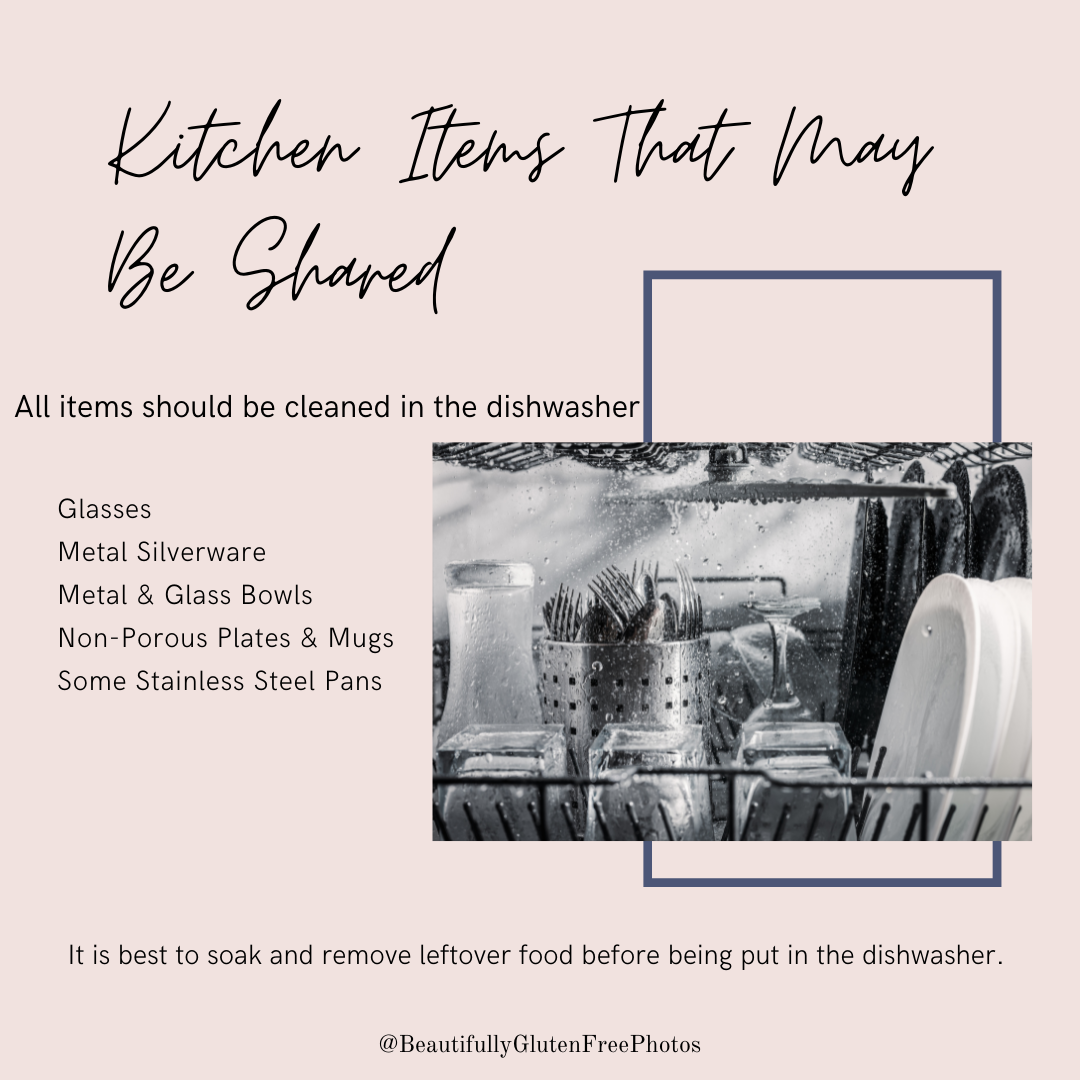Creating a safe gluten free kitchen
After receiving a celiac disease diagnosis or learning that you need to follow a strict gluten free diet, it is important to create a safe space for cooking and enjoying meals.
Every family, household and living situation has different needs and realities, what works for one, may not work for another. Ideally, someone with celiac disease, would be able to have a dedicated kitchen, free from gluten containing ingredients, food products and kitchen equipment. Since a dedicated gluten free kitchen is not always feasible, a person, family or living group will need to create a shared kitchen system that works best for everyone involved.
Regardless of the type of kitchen you choose, the kitchen should receive a deep clean; taking everything out of the cupboards, drawers, pantry, and fridge to be sanitized, wiped down, vacuumed and mopped in order to remove any residual gluten. Starting a new gluten free life is much easier with a clean kitchen.
Dedicated Gluten Free Kitchen:
All gluten containing ingredients and food will be removed and replaced with gluten free options. All cooking tools, utensils and equipment, that cannot be cleaned sufficiently, should be removed and replaced (see below).
This route will greatly decrease worry, anxiety and accidental gluten exposure from cross-contact. It also needs to be ok with the other members of the household.
Shared Gluten Free Kitchen:
Maintaining a safe shared kitchen is more challenging because of increased chance of gluten exposure from either accidentally consuming gluten directly or cross-contact during food preparation, but it can be successful when clear and strict rules are implemented and followed. Each person in the living space will need to understand and follow the established rules.
It is also important to create an atmosphere where people can be honest when mistakes are made, because mistakes will happen. For example, if gluten containing crumbs get onto the gluten free butter or in the jam jar, it can’t be ignored for fear of punishment or anger, it needs to be addressed and replaced as soon as possible.
After the kitchen and food storage areas have been thoroughly cleaned, it is time to organize the space. All gluten free food and equipment will need to be stored separately from the gluten containing items.
In the refrigerator, pantry and cupboards, it is advised to, at least, keep gluten free food above gluten containing food. This helps to keep gluten containing crumbs from landing on gluten free food.
Ideally, there will be a separate area in the kitchen that is away from where gluten containing foods are stored and prepared. Gluten containing particles, like those from wheat flour, can remain in the air for up to a day; which can lead to gluten free areas and equipment becoming unsafe. It is because of this that most shared kitchens stop completely, or minimize, using gluten containing flours. If gluten containing flours are used, it is a good idea to work with them as far away from the gluten free area as possible and follow up with an extra thorough cleaning of surfaces.
One idea to consider, while organizing the kitchen, is the ratio between gluten containing and gluten free food/ingredients. Which will be used more? If the space will be used, primarily, for gluten free cooking, gluten containing items should be stored and prepared in a smaller, and to the side, area and vice versa.
While some kitchen ware can be shared between gluten containing and gluten free foods, other items cannot be shared; even if they can go through the dishwasher. Gluten is very “sticky” and can’t be completely removed from certain surfaces: porous, wood, grooved, scratched and tools like the colander. Trace amounts of gluten can cause harm, and a lot of discomfort, to someone with celiac disease, it is advised to invest in new versions of these items and use them only for preparing and serving gluten free food.
Once the shared kitchen is established, the method of cleaning and maintenance is very important.
Hand washed items need to be cleaned with sponges/rags that are dedicated to either gluten containing or gluten free equipment because gluten will stick to sponges and rags. If dishes need to be soaked, don’t share the same soaking liquid.
When cleaning counter tops and food preparation areas, use either separate sponges/rags or, the better choice, paper towels with a bleach solution or a cleaner similar to 409. While it may seem wasteful, using paper towels is an easy way to help minimize accidental cross-contact with gluten while cleaning.
Another way to help minimize accidental cross-contact with gluten is to make sure that the sink has been wiped out and cleaned with either a bleach solution or a cleaner similar to 409 before preparing, cooking or draining gluten free foods.
Ultimately, the goal is to create a safe space that decreases the anxiety and worry that comes with following a strict gluten free diet and to minimize gluten exposure.
Tips for handling food in a shared kitchen
Wash hands before and after handling food, especially gluten containing foods/ingredients.
When possible use Squeeze bottles for condiments, mayonnaise, mustard, relish, honey, jelly, making sure to not touch the gluten containing food with the tip.
Have separate containers of other spreadable or spoon dipped foods: peanut butter, hummus, jarred jams, jarred honey, butter, cheeses, dips, salsa, guacamole, yogurt
Buy single serving packets of food: hummus, guacamole, yogurt, crackers, popcorn.
If there is continued gluten exposure, review the structures and rules that have been put into practice and make necessary adjustments. It can take time to figure out what works in your space.
Anne Barbo Moon
Disclaimer:
While I have 15+ years’ experience of navigating the world as the parents of a child with celiac, have worked with multiple celiac disease related organizations, and has a Master’s of Science in Holistic Nutrition I am not a physician, or other licensed medical professional. The material and content contained on this website is for informational purposes only and are not intended to serve as a substitute for consultation, diagnosis, or medical treatment by a licensed medical professional. Please consult your doctor for any medical or health-related questions. The information contained on this website should NOT replace medical or health-related advice from a physician or licensed medical professional.









